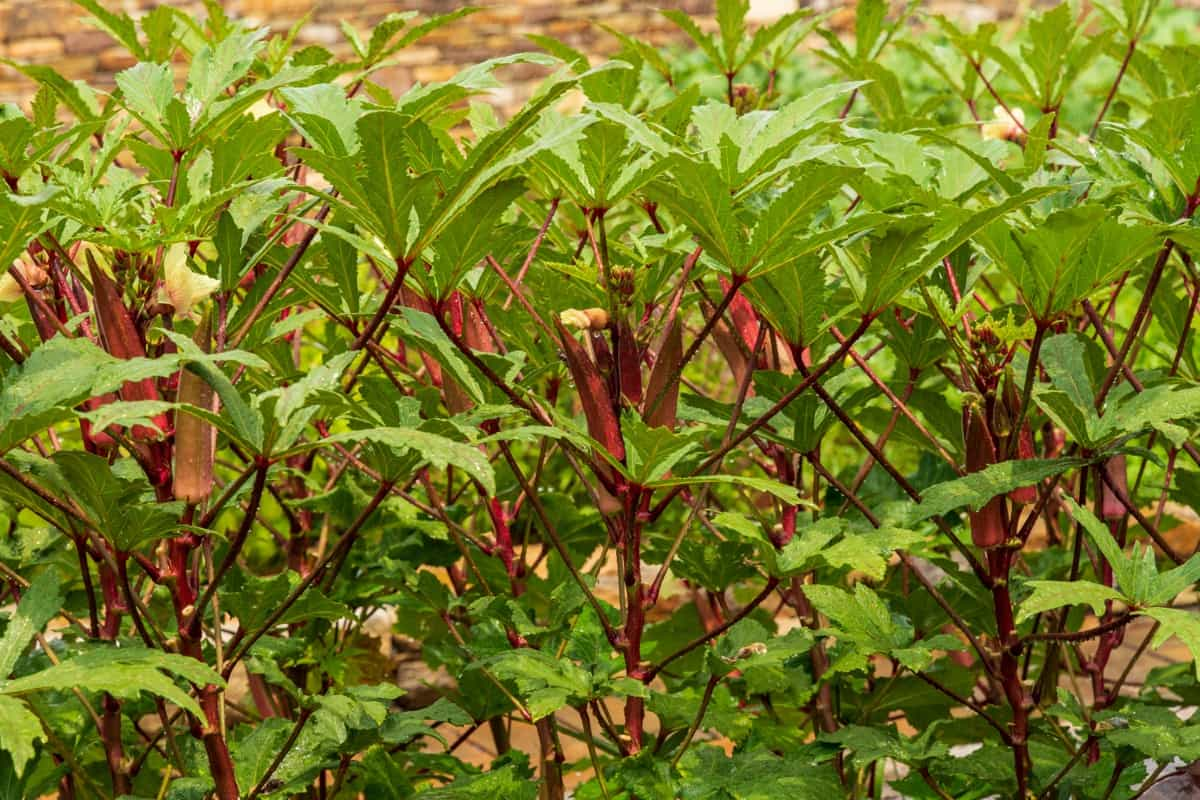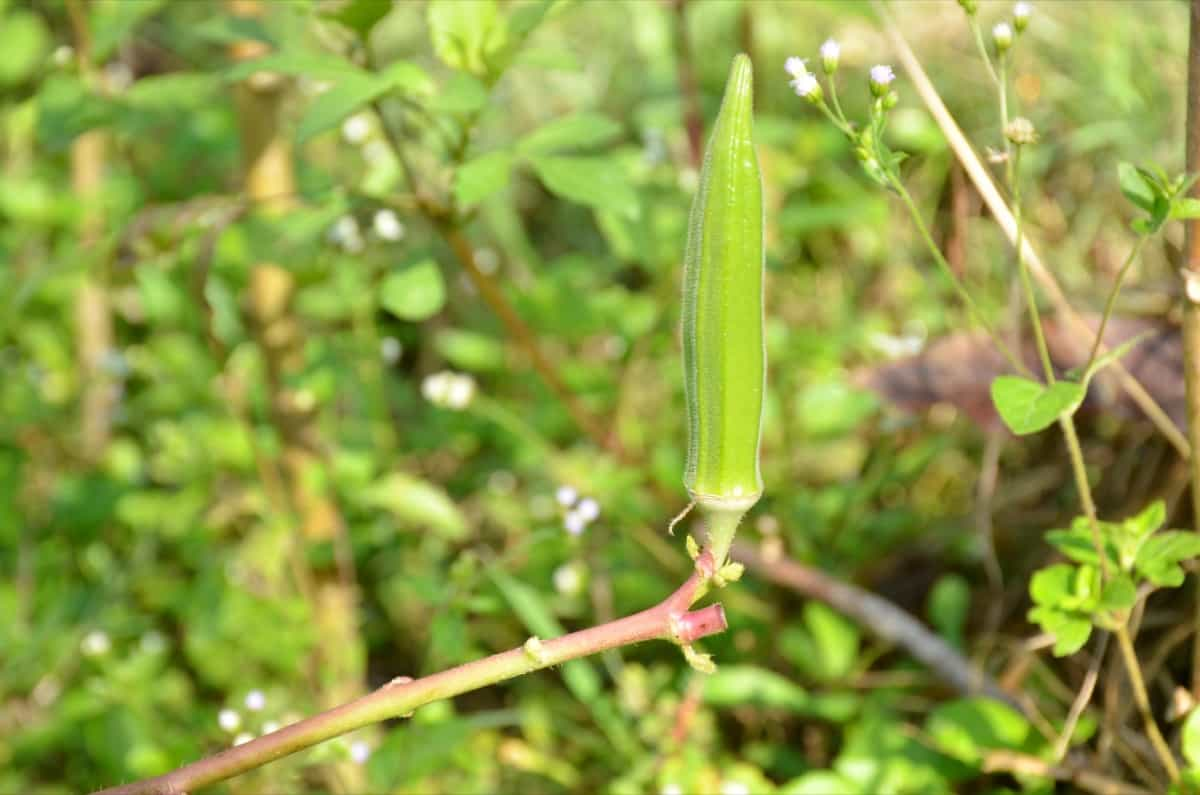Okra fungal diseases can significantly impact the health and productivity of Okra plants. Various fungi cause these diseases and can lead to stunted growth, reduced yield, and even death of the plant in severe cases.

How to Control Okra Fungal Diseases Naturally
Understanding Okra Fungal Diseases
Fungal diseases are caused by various fungi that thrive in warm and humid conditions, making Okra plants susceptible to infection. These diseases can harm plant health and productivity if left untreated. The main impact of Okra fungal diseases is the development of symptoms such as wilting, yellowing, or browning leaves and lesions on stems and pods. Proper sanitation practices, such as removing infected plants, can prevent further spread. Regularly monitoring your Okra patch for early signs of infection allows for timely intervention.
Common Okra Fungal Diseases and Symptoms
These diseases affect the growth and yield of Okra plants and their overall health and vigor. Some common fungal infections affecting Okra include charcoal rot, Fusarium wilt, powdery mildew, southern blight, and white mold. Blackened roots characterize charcoal rot and stems along with wilting leaves. On the other hand, Fusarium wilt causes yellowing or browning of lower leaves followed by wilting of the entire plant.
Powdery mildew disease appears as a white powdery coating on the leaves, while southern blight leads to reddish-brown lesions near the soil surface. Fluffy white patches on stems and pods identify white mold. These thrive in warm and humid conditions, making prevention crucial for maintaining healthy Okra plants. Regularly inspect your Okra plants for any signs of disease and remove infected parts promptly to prevent further spread. Practice good sanitation by removing fallen debris from around your garden area.
Natural Methods for Preventing Okra Fungal Diseases
- Proper plant spacing – Make sure there is enough distance between each Okra plant to promote air circulation and reduce the chances of fungal spores spreading.
- Healthy soil – Ensure your soil has good drainage by adding organic matter such as compost or well-rotted manure. This will help prevent waterlogged conditions that can contribute to fungal growth.
- Mulching – Using mulch around your Okra plants can also provide a protective barrier against fungal spores. Organic mulch like straw or wood chips helps regulate moisture levels and prevents splashing infected soil onto leaves during watering.
Organic Soil Management Techniques to Control Okra Fungal Diseases
- Proper drainage – Excess moisture can lead to fungal infections, so avoid overwatering and provide adequate plant drainage.
- Crop rotation – Rotating your Okra with different crops each season helps prevent the buildup of disease-causing organisms in the soil. This breaks the disease cycle and reduces the risk of infection.
- Weed control – Weeds can serve as hosts for fungal diseases, so removing them regularly prevents their spread to your Okra plants.
In case you missed it: How to Control Leaf Miners Naturally in Your Garden: How to Control with Natural and Organic Treatment

Companion Planting Strategies for Okra Disease Prevention
- Marigolds – Marigolds emit a strong scent that repels many common garden pests, including nematodes, which can cause root rot in Okra plants. Planting marigolds near your Okra can act as a natural deterrent.
- Basil – Basil has been shown to repel aphids, small insects that can transmit viral diseases to your Okra plants. By planting basil nearby, you can help protect your crop from these harmful pests.
- Beans – Beans make excellent companions for Okra because they fix nitrogen in the soil. Okra thrives in nitrogen-rich soil, so planting beans alongside it can provide this essential nutrient naturally.
Proper Watering Practices to Minimize Okra Fungal Infections
Water your Okra plants early in the morning, preferably before sunrise. This allows the foliage and soil surface to dry quickly during the day, reducing humidity levels that promote fungal diseases. Avoid overhead watering methods like sprinklers, as they create a moist environment ideal for fungal development. Instead, choose drip irrigation or soaker hoses that deliver water to the root zone without wetting the foliage excessively. This helps minimize contact between water droplets and plant leaves, preventing moisture-loving fungi from taking hold.
Beneficial Insects for Okra Disease Control
- Ladybug – Ladybugs feed on aphids, which are known to transmit fungal infections to Okra plants. By releasing ladybugs into your garden or using attractant plants like dill and fennel, you can encourage these helpful insects to stick around and protect your Okra from infestations.
- Lacewing – These delicate insects have voracious appetites for pests like thrips and mites, which can weaken Okra plants and make them more susceptible to fungal infections.
- Hoverflies – Hoverflies are also valuable allies when controlling Okra diseases naturally. The larvae of hoverflies prey on aphids, while adult hoverflies help with pollination as they visit flowers in search of nectar.
Homemade Organic Sprays for Treating Okra Fungal Diseases
- Baking soda and water – Baking soda has antifungal properties that can inhibit plant fungi growth. Mix baking soda and water and then spray it onto your Okra plants.
- Neem oil – Neem oil has natural fungicidal properties that can help prevent fungal diseases in Okra plants. Mix neem oil and water and then spray it onto your plants, especially on the undersides of leaves where fungi tend to thrive.
- Garlic spray – It is also known to be an effective organic treatment for fungal diseases. Crush garlic cloves and steep them overnight in hot water. Strain the mixture, dilute it with water (about one part garlic mixture to three parts water), and use it as a foliar spray on your Okra plants.
Cultural Practices to Reduce the Risk of Okra Fungal Infections
- Crop rotation – Avoid planting Okra in the same spot year after year, as this can lead to a buildup of fungal pathogens in the soil. Instead, rotate your crops with other non-host plants to break the disease cycle.
- Proper spacing – Crowding them together creates a humid and crowded environment, encouraging fungal growth. Give each plant enough space for adequate air circulation and sunlight penetration.
In case you missed it: How to Control Turmeric Pests Naturally: How to Get Rid of Them with Natural and Organic Treatment

Integrated Pest Management (IPM) Approaches for Managing Okra Fungal Diseases
The aspect of IPM for Okra fungal disease management is regular monitoring and identifying specific pathogens affecting your plants. This allows for targeted treatments and interventions. Regularly inspecting your plants for symptoms such as wilting or discoloration, you can catch any problems early on. Another component is cultural practices that create unfavorable conditions for fungi to thrive.
This includes proper spacing between plants to improve air circulation, removing infected plant debris promptly, and practicing crop rotation to interrupt the life cycle of pathogens. Incorporating resistant varieties into your garden can also help reduce the fungal infections in Okra plants. Choose cultivars bred with genetic resistance against common fungal pathogens found in your region.
Summary of Controlling Okra Fungal Diseases Naturally
| Fungal Diseases | Symptoms | Cause | Control |
| Charcoal rot | Wilting, yellowing leaves, dark discoloration on stems | Soil-borne fungus | Rotate crops regularly to reduce pathogen buildup; improve soil drainage |
| Fusarium wilt | Yellowing and wilting of lower leaves | Soil-borne fungi (Fusarium oxysporum) | Plant-resistant varieties; practice crop rotation |
| Powdery mildew | White powdery patches on leaves | Fungus (Erysiphe cichoracearum) | Remove infected leaves promptly; apply organic fungicides like neem oil. |
| Southern blight | Collapsed stems at ground level with white fluffy growth | Sclerotium rolfsii fungus | Maintain good sanitation practices |
| White mold | Fluffy white growth on stems. | Sclerotinia sclerotiorum | Improve air circulation; provide adequate spacing between plants. |
Frequently Asked Questions (FAQ) on Okra Fungal Diseases
What Causes Okra Fungal Diseases?
Okra fungal diseases are caused by various fungi that thrive in warm and humid conditions. These fungi attack the plant’s leaves, stems, and fruits, leading to various symptoms.
How Do I Identify If My Okra Plants Have Fungal Diseases?
Common Okar fungal disease symptoms include wilting, yellowing, or brown spots on leaves, powdery or fuzzy growth on the surface of leaves and stems, rotting fruit, and stunted growth.
Can I Prevent Okra Fungal Diseases Naturally?
Yes. You can take preventive measures such as practicing good soil management techniques like proper drainage and avoiding overwatering. Companion planting with disease-resistant plants can also help reduce the risk.
In case you missed it: How to Control Dahlia Pests Naturally: How to Get Rid of Them with Natural and Organic Treatment

Are There Any Organic Treatments for Controlling These Diseases?
Homemade organic sprays using ingredients like neem oil or baking soda can be effective against certain fungal infections. However, it’s essential to regularly monitor your plants’ health and take action at the first sign of trouble.
Conclusion
Okra fungal diseases are a group of plant infections caused by various fungi that target the Okra plant. These fungal diseases can be detrimental to the health and productivity of your precious Okra crop. Understanding Okra fungal diseases is essential for effective prevention and treatment. By identifying the specific symptoms displayed by your Okra plants, you can take the necessary steps to combat each disease individually.
- Beneficial Insects in Pest Management
- Natural Solutions for Pest Control in Flower Gardens
- Types of Fungicides Used in Agriculture
- Common Issues in the Fruit Development Stage of Pomegranate Farming
- Fruit Development Issues in Papaya: Easy Solutions and Treatment
- Soil-Borne Diseases and How to Protect Your Plants
- Practices to Prevent Disease Spread in the Garden
- From Wilted to Thriving: How to Treat Root Rot Naturally in Houseplants
- Natural Remedies to Cure Brown Spots on Fig Tree Leaves